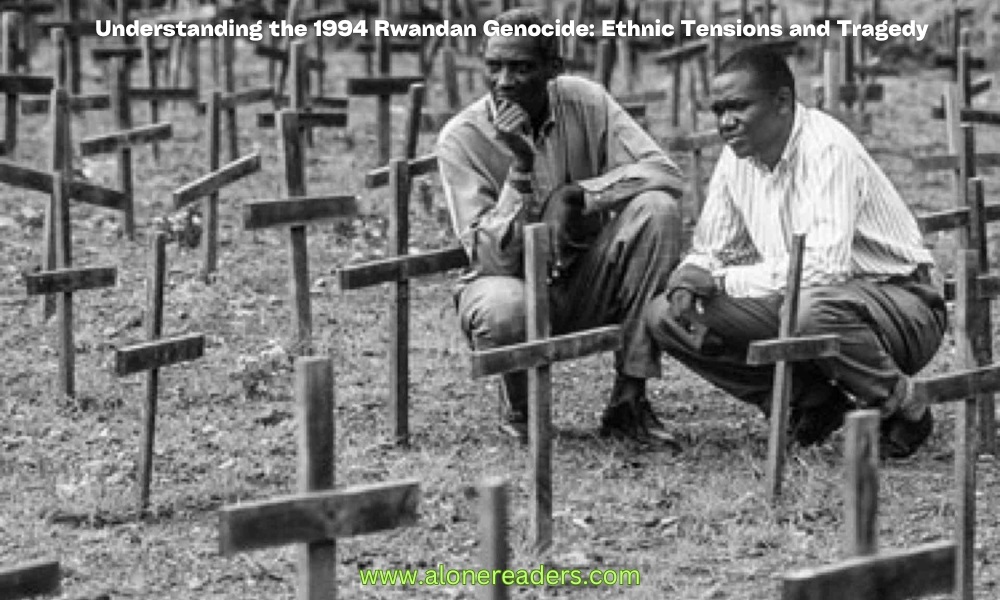
In the spring of 1994, Rwanda, a small landlocked country in the heart of Africa, descended into one of the darkest periods of its history. Over the course of approximately 100 days, from April to July, an estimated 800,000 to 1,000,000 Tutsi and moderate Hutu were systematically murdered. This tragic event, known as the Rwandan Genocide, was the culmination of long-standing ethnic tensions between the Hutu and Tutsi groups.
The seeds of this conflict were sown during the colonial period when Rwanda was under Belgian control. The colonial administration favored the minority Tutsi over the majority Hutu, exacerbating existing socio-economic divisions. Tutsis were often placed in positions of power and had better opportunities, leading to resentment among the Hutus. When Rwanda gained independence in 1962, the power dynamics shifted as the Hutus took control of the government, which led to periodic violence and discrimination against the Tutsis.
The immediate trigger of the genocide was the assassination of Rwandan President Juvénal Habyarimana, a Hutu, whose plane was shot down above Kigali airport on April 6, 1994. The attack ignited existing tensions and sparked widespread violence, primarily perpetrated by Hutu extremists against the Tutsi population and moderate Hutus who opposed the extremist agenda.
These extremists, including members of the presidential guard, local militia groups known as Interahamwe, and ordinary citizens, were often incited by hate-filled propaganda. Radio stations and newspapers played a significant role in the dissemination of propaganda, urging people to "weed out the cockroaches," referring to the Tutsi. The scale and speed of the slaughter were staggering, with roadblocks and house-to-house searches to kill Tutsis and anyone hiding them.
The international response to the Rwandan Genocide was markedly inadequate. The United Nations, despite having peacekeepers in the country, failed to prevent the genocide's escalation or protect civilians. The peacekeepers were not only under-resourced but also restricted by their mandate, which limited their ability to intervene. Most Western countries evacuated their citizens and took little further action, leaving Rwandans to their fate.
Within Rwanda, the genocide ended when the Rwandan Patriotic Front (RPF), a Tutsi-led rebel group that had been engaging in a civil war with the Rwandan government, took control of the country. The RPF's advance into Kigali and subsequent takeover of the government put an end to the mass killings.
The aftermath of the genocide left Rwanda devastated. The social fabric of the country was torn apart, with millions of Rwandans displaced or living as refugees. Many were left with deep psychological scars due to the violence they witnessed or participated in. The Rwandan government, led by Paul Kagame since the RPF’s victory, embarked on a series of reconciliation and justice initiatives, including community-based Gacaca courts, aimed at healing the national wounds.
These Gacaca courts were a form of transitional justice designed to handle the enormous number of genocide cases. They operated based on Rwandan traditional practices and aimed to promote healing by encouraging perpetrators to confess their crimes and seek forgiveness from their communities. However, these courts also faced criticism for issues related to fairness and the depth of reconciliation they could achieve.
Economically, Rwanda has made significant strides since the genocide. The government has promoted policies to foster economic growth and development, reduce poverty, and attract investment. These efforts have transformed Rwanda into one of Africa's most stable countries, known for its cleanliness, safety, and orderly governance.
However, despite these advances, the shadows of the genocide linger. Issues of ethnic identity and political freedom remain sensitive. The government has been criticized for its heavy-handed approach to dissent and political opposition, which it often justifies as necessary to prevent another ethnic conflict.
The Rwandan Genocide remains a profound tragedy and a stark reminder of the horrors that can arise from ethnic divisions and political manipulation. It serves as a lesson on the importance of international intervention in preventing mass atrocities and the need for effective strategies to promote reconciliation and healing in post-conflict societies. The story of Rwanda's recovery also offers a beacon of hope, showing the resilience of a nation and the possibilities of rebirth and renewal.